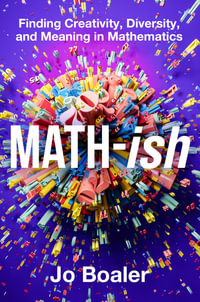| Some Characteristics of Instructional Design for Industrial Training | p. 1 |
| Support for Simulation-Based Learning: The Effect of Assignments in Learning about Transmission Lines | p. 9 |
| Deconstructionist Student Models in the Computer-Based Learning of Science | p. 27 |
| Evaluating Educational Technologies: Evaluation of Teaching Material Versus Evaluation of Learning | p. 37 |
| Panel Discussion: The Use of Internet in Education | p. 39 |
| Epiphyte Advisor Systems for Collaborative Learning | p. 42 |
| Expertext Approach and Learning Environments | p. 51 |
| On Content-Balanced Adaptive Testing | p. 60 |
| An Object-Oriented Shell for Intelligent Tutoring Lessons | p. 69 |
| WORDMATH: A Computer-Based Environment for Learning Word Problem Solving | p. 78 |
| Towards Pedagogically Sound Learning Environments: The Specification Process | p. 87 |
| A Multi-Agent Architecture for an ITS with Multiple Strategies | p. 96 |
| Decentralized Computer Learning Systems Based on Autonomous Agent Approach | p. 105 |
| Foundations of an Adaptative Tutoring System Based on Systemic Networks | p. 114 |
| The Intelligent Discussion Supporting System under the Distributed Environment | p. 123 |
| Applied Artificial Intelligence for Teaching Numeric Topics in Engineering Disciplines | p. 132 |
| Motivating the Design for a Computer Assisted Environment for Writers in a Second Language | p. 141 |
| An Experimental Environment for the Production of Pedagogical Simulations | p. 149 |
| A Component-Based Interactive Practice Environment | p. 158 |
| Representations of Instructional Purpose in Courseware Requirements Engineering | p. 167 |
| The Formula: A Relation? Yes, but A Concept Too!! | p. 176 |
| CREAM-Tools: An Authoring Environment for Curriculum and Course Building in an Intelligent Tutoring System | p. 186 |
| Authoring System for Reinforcement and Evaluation (SARE) | p. 195 |
| Preliminary Student Evaluation of a CBL Course on Digital Systems Electronics | p. 204 |
| Cooperative and Distance Learning in Electronics Using Internet | p. 213 |
| Cooperative Distance Learning with an Integrated System for Computer Assisted Laboratory Work | p. 220 |
| Implementation and Evaluation of a WWW Multiple Choice Question Server | p. 228 |
| Teaching Informatics with ARIANE: An Experimental Internet-Based Pedagogical Environment | p. 236 |
| Multimedia Training and Remote Operating Laboratory: Innovative Solutions for Instrumentation and Electronic Measurements Courses | p. 245 |
| Hypermedia Exercises Prototyping and Modelising | p. 252 |
| Testbed for Measuring Multimedia Presentation Quality Disorders in Courseware | p. 261 |
| Hypertexts as Educational Systems: Pedagogical Issues in Teaching and Learning Mathematical Problem Solving | p. 270 |
| Structured Hypermedia Authoring: A Simple Tool for the Design and Implementation of Structured Hypermedia Databases | p. 279 |
| Designing Educational Multimedia | p. 288 |
| Design of a Windows Software for Elastic Field Simulation: Application to Visualisation and Animation of a Rectangular Piece in a Projection with a Load on the End | p. 298 |
| A Hypermedia Intelligent Tutor for Mathematical Modelling Teaching | p. 306 |
| Design of Software for the Simulated and Tutorized Study of Atomic Models Through the Use of Hypertext | p. 313 |
| TEA: An Agrarian Economy Instructor System | p. 322 |
| The Analogical Model-Based Physics System: A Workbench to Investigate Issues in How to Support Learning by Analogy in Physics | p. 331 |
| Seeing is Believing | p. 340 |
| FLIP: Flexible Learning in Physics and Mechanics | p. 349 |
| 3D-Schema: An Intuitive Model for Analog Circuits Instruction | p. 356 |
| Computer Aided Learning in Microelectronics Technology in Slovakia (State of the Art) | p. 365 |
| Introduction to Thermodynamics Based on Simulations and Hypertext | p. 374 |
| A Computer-Supported Course in Mechanics | p. 381 |
| The InforMed Professor: Clinical Instruction of Breast Disease Diagnosis and Management | p. 390 |
| Computer Modelling and Simulation of the High Frequency Disturbing Processes for Low Voltage Consumers Applied in Power System Training and Education | p. 399 |
| Interactive Practical Teaching of Digital Circuits Design by Means of Field Programmable Gate Arrays | p. 408 |
| Interactive Learning Environment in Mechanics | p. 415 |
| Flexible Intelligent Environment for Tutoring and Assessing Learners | p. 424 |
| DLW - A Learning Environment for Lake Water Diagnosis | p. 427 |
| XMOISE: A Logical Spreadsheet to Elicit Didactic Knowledge | p. 430 |
| Learning Proton NMR Spectroscopy with Computers | p. 433 |
| Tutorized Simulated Study of RC, LR and LRC Circuits for Windows | p. 436 |
| Interactive Knowledge Base for Designing New Technology Based Tutoring Systems | p. 439 |
| Multimedia System for Instruction and Learning Electronics | p. 442 |
| Collaborative Learning Systems on the INTERNET with Case-Based Reasoning | p. 445 |
| An Approach to Learning Software Based on Student Modelling | p. 448 |
| The Leibinz TLSI: A Secondary Macro Programming Interface and Universal ASCII User Interface Shell for Hypermedia | p. 451 |
| A Hypermedia Presentation to Understand Interactions Between Electron and Solid - Scanning Electron Microscope | p. 454 |
| A Student Model in Numerical Analysis for an Actual Engineering Student | p. 460 |
| Teaching Primary Science: A Psychologically Well-Grounded Approach | p. 463 |
| GITE: Intelligent Generation of Tests | p. 466 |
| TUDER: An Intelligent Tutoring System for Symbolic Derivation | p. 469 |
| SBC-RX: Knowledge Based System for Radiodiagnosis and Training of Radiologists. The Teaching File Tool. A New Feature | p. 472 |
| SIMFOT: A Software for Simulating Photoelastic Experiments | p. 476 |
| Author Index | p. 479 |
| Table of Contents provided by Blackwell. All Rights Reserved. |
























